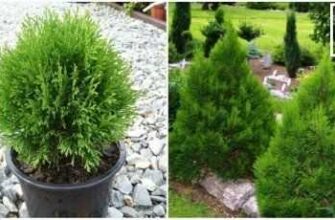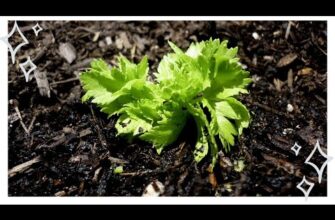- Остеоспермум: выращивание из семян, виды и сорта
- Что такое остеоспермум
- Основные сорта и виды
- Выращивание остеоспермума из семян
- Подготовка почвы для выращивания остеоспермума
- Выбор подходящего места
- Подготовка почвы
- Посев семян
- Основные виды остеоспермума
- Остеоспермум многолетний
- Остеоспермум гибридный
- Остеоспермум травянистый
- Остеоспермум семейства астровых
- Остеоспермум соцветия
- Остеоспермум с перистыми листьями
- Остеоспермум с крупными цветками
- Популярные сорта остеоспермума
- Сорт «Пикоти»
- Сорт «Сансет»
- Сорт «Серебряный радуга»
- Сорт «Фантастик»
- Уход за остеоспермумом
- Полив
- Подкормка
- Обрезка
- Защита от вредителей
- Виды и сорта
- Размножение остеоспермума
- Размножение семенами
- Размножение черенками
- Вопрос-ответ:
- Какие виды и сорта остеоспермума можно вырастить из семян?
- Как правильно выращивать остеоспермум из семян?
- Могу ли я выращивать остеоспермум в квартире?
- Как часто нужно поливать остеоспермум?
- Как долго происходит выращивание остеоспермума из семян?
- Видео:
- "НЕИЗБИТЫЕ" цветы для кашпо, балкона, сада. Когда надоели петунии и лобелии..

Остеоспермум – это красивое цветущее растение, которое привлекает внимание своими яркими и разнообразными цветами. Известно множество видов и сортов остеоспермума, каждый из которых имеет свою особенность и привлекательность.
Одна из главных особенностей остеоспермума в том, что его можно выращивать из семян. Этот процесс несложен и доступен для садоводства как для начинающих, так и для опытных цветоводов. Семена остеоспермума зреют в коробочках, которые легко открываются.
Остеоспермум может порадовать своими цветами в течение всего лета и осени. Он хорошо растет на солнечных участках с плодородной почвой. Существуют разные виды и сорта остеоспермума, которые отличаются не только цветом цветков, но и формой и размером листьев. Некоторые сорта имеют большие и яркие цветы, другие – нежные и маленькие.
Выращивание остеоспермума из семян – это интересный и увлекательный процесс. Растение быстро растет и радует глаз своими прекрасными цветами. Остеоспермум прекрасно смотрится в группах и смешанных посадках, а также в садовых контейнерах и вазонах. Это растение подходит для украшения садов и террас, а также для создания цветочных клумб и границ.
Остеоспермум: выращивание из семян, виды и сорта
Остеоспермум – это прекрасное растение с яркими и красочными цветами, которые привлекают внимание своей красотой. Выращивание остеоспермума из семян доступно даже для начинающих садоводов.
Семена остеоспермума можно приобрести в специализированных магазинах или собрать самостоятельно с зрелых цветов. Для успешного выращивания необходимо подготовить почву, смешав песок и торф в равных пропорциях.
Уход за остеоспермумом достаточно прост. Он предпочитает яркое солнце и умеренный полив. Важно помнить, что растение не переносит высоких температур и засухи, поэтому необходимо регулярно увлажнять почву.
Остеоспермум представлен различными видами и сортами. Одни виды отличаются многолетними побегами и прекрасно подходят для украшения садов и клумб, другие виды являются однолетниками и широко используются для выращивания в горшках и контейнерах.
Среди популярных сортов остеоспермума можно выделить ‘Passion Mix’, ‘Sundaze Golden’, ‘Serenity’, ‘Akila Mix’ и другие. Каждый сорт имеет свои особенности и отличается по цвету и форме цветков.
Что такое остеоспермум

Остеоспермум — это растение семейства астровых, которое также известно под названием «дентелис». Оно произрастает в субтропических и тропических регионах и славится своими красивыми и необычными цветами.
Остеоспермум отличается от других цветов своими уникальными семенами, которые похожи на небольшие крылышки. Это однолетнее растение, которое отличается неприхотливостью в выращивании и уходе, что делает его популярным среди садоводов и любителей комнатных растений.
Выращивание остеоспермума из семян — это простой и увлекательный процесс. Для успешного выращивания необходимо выбрать подходящее место для посадки и обеспечить растению достаточное количество солнечного света и питательной почвы. Существует множество сортов и видов остеоспермума, каждый из которых имеет свои особенности и красочные цветы.
Основные сорта и виды
- Остеоспермум «Пинк Бэрри» — этот сорт отличается нежными розовыми цветами и привлекательным ароматом.
- Остеоспермум «Санрайз Серебристый» — этот сорт имеет серебристо-белые цветы и яркую зеленую листву.
- Остеоспермум «Санлайт Голд» — этот сорт отличается золотистыми цветами и ярким солнечным оттенком.
Каждый сорт остеоспермума обладает своими уникальными особенностями и необычными цветами, что позволяет создавать красочные и оригинальные композиции в саду или на балконе. Выращивание остеоспермума из семян — это отличный способ получить яркие и красивые цветы, которые будут радовать вас своим видом на протяжении всего сезона.
Выращивание остеоспермума из семян
Остеоспермум — это красивое и неприхотливое растение, которое можно легко вырастить из семян. Для успешного выращивания остеоспермума необходимо следовать определенным правилам.
Первым шагом в выращивании остеоспермума из семян является подготовка почвы. Семена остеоспермума лучше всего рассаживать в грунт, который хорошо дренирован и плодороден. Рекомендуется добавить органические удобрения или перегноя в почву для обеспечения достаточного питания растения.
Семена остеоспермума обычно посевают в землю весной или осенью. Чтобы обеспечить хорошую прорастаемость, семена нужно немного прополощать водой перед севом. Затем семена следует посадить на глубину около 1-2 см и увлажнить почву. Для лучшего результата рекомендуется использовать пленку или теплицу для создания оптимальных условий для прорастания.
Уход за остеоспермумом после посева также играет важную роль в успешном выращивании. Растение требует регулярного полива, чтобы почва всегда была влажной, но не переувлажненной. Также рекомендуется удалить сорняки, чтобы предотвратить конкуренцию за питательные вещества.
Остеоспермум имеет множество видов и сортов, каждый из которых имеет свои особенности и требования к выращиванию. При выборе сорта и видов остеоспермума для выращивания следует обратить внимание на климатические условия вашего региона и ваши предпочтения. Садоводство с остеоспермумом — это отличный способ украсить ваш сад или огород яркими и красивыми цветами.
Подготовка почвы для выращивания остеоспермума
Остеоспермум — это прекрасные цветы, популярные в садоводстве. Выращивание остеоспермума из семян — увлекательный процесс, который начинается с подготовки почвы. Правильная подготовка грунта обеспечивает хороший старт для роста и развития растения.
Выбор подходящего места
Перед посевом остеоспермума необходимо выбрать подходящее место. Остеоспермумы предпочитают солнечные места с хорошей защитой от ветра. Также важно, чтобы почва была хорошо дренированной, чтобы избежать затопления корней.
Подготовка почвы
Для выращивания остеоспермума рекомендуется использовать песчано-глинистую почву с нейтральным или слабокислым pH. Перед посевом рекомендуется измельчить почву и удалить крупные комки и сорняки. Также полезно добавить органическое удобрение для улучшения структуры почвы и обеспечения питательных веществ для растения.
Посев семян

Семена остеоспермума следует посеять на небольшую глубину, примерно 1-2 см, и умеренно увлажнить почву. Рекомендуется соблюдать интервалы между семенами, чтобы растения имели достаточно места для роста и развития.
Правильная подготовка почвы является важным шагом в выращивании остеоспермума. Она обеспечивает благоприятные условия для роста и развития растения, позволяя ему раскрыть все свои прекрасные качества.
Основные виды остеоспермума

Остеоспермум – это красивое цветущее растение, которое широко используется в садоводстве. Существует несколько основных видов этого растения, каждый из которых обладает своими особенностями и требует определенного ухода.
Остеоспермум многолетний

Одним из самых популярных видов остеоспермума является многолетний. Он отличается длительным цветением и яркими крупными цветками различных оттенков: от белого до ярко-розового. Для выращивания этого вида необходимо обеспечить солнечное место и почву с хорошей дренажной способностью.
Остеоспермум гибридный
Гибридный остеоспермум является результатом скрещивания различных сортов. Он обладает большим разнообразием цветов и форм цветков. Этот вид требует регулярного полива и удобрения для активного роста и обильного цветения. Остеоспермум гибридный отлично подходит для создания ярких клумб и рабаток.
Остеоспермум травянистый

Травянистый остеоспермум – это однолетнее растение с нежными и воздушными цветками. Оно отличается быстрым ростом и высокой устойчивостью к неблагоприятным погодным условиям. Для выращивания травянистого остеоспермума подходят солнечные участки с плодородной почвой.
Остеоспермум – это цветок, который прекрасно подходит для украшения сада и создания ярких цветочных композиций. Выращивание и уход за ним не требуют особых сложностей, а большое количество сортов позволяет выбрать именно те цветы, которые будут идеально сочетаться с окружающим ландшафтом. Выращивание остеоспермума из семян – это отличный способ получить красивое и яркое растение для сада или горшка.
Остеоспермум семейства астровых

Остеоспермум – это растение из семейства астровых. Оно популярно в садоводстве благодаря своим красивым цветкам и разнообразию видов и сортов.
Виды остеоспермума могут отличаться по цвету и форме цветков. Некоторые виды имеют одиночные цветки, другие образуют соцветия. Цветки могут быть белыми, желтыми, оранжевыми, розовыми или фиолетовыми. Остеоспермумы также могут иметь различные оттенки и разнообразные цветочные формы.
Сорта остеоспермума отличаются по форме и цвету цветков, а также по размеру и форме растения. Некоторые сорта имеют крупные цветки с яркими оттенками, другие – мелкие цветки с нежными пастельными цветами. Существуют также сорта с разнообразными окрасками листьев.
Для выращивания остеоспермума можно использовать семена. Они обладают хорошей всхожестью и легко размножаются. Семена можно посеять в грунт или предварительно выращивать рассаду. Остеоспермум обычно начинает цвести через 2-3 месяца после посева.
Уход за остеоспермумом включает полив, подкормку и обрезку. Растение нуждается в регулярном поливе, особенно в сухие периоды. Остеоспермум также нуждается в удобрениях для обеспечения хорошего роста и цветения. Обрезка помогает формировать куст и удалять увядшие цветы.
Так стоп!!! Вы всё ещё не подписаны на наши каналы в Телеграмм и Дзен? Посмотрите: ТГ - (@historyfantasydetectivechat) и Дзен (https://dzen.ru/myshortsstorys)
Остеоспермум соцветия
Остеоспермум – растение, принадлежащее к семейству астровых. В садоводстве популярны различные сорта остеоспермума, которые отличаются формой цветков, их окраской и размером.
Выращивание остеоспермума из семян – достаточно простой процесс. Семена можно посеять в грунт весной или осенью. Цветение начинается через 2-3 месяца после посева.
Остеоспермумы отличаются разнообразием видов, среди которых встречаются как однолетние, так и многолетние растения. Популярными видами являются остеоспермум многолетний, остеоспермум моннье и остеоспермум амплитудный. Каждый вид обладает своими особенностями и требует определенных условий выращивания.
Цветы остеоспермума имеют яркую окраску, чаще всего это оттенки белого, розового, апельсинового и фиолетового. Из-за своей красоты и неприхотливости, остеоспермум активно используется в оформлении садов и клумб.
Остеоспермум соцветия могут быть представлены в различных формах, например, кустовыми или плотными шарами. Они также могут иметь разную высоту и диаметр. Благодаря этому, остеоспермумы могут стать ярким акцентом в любом саду или цветнике.
Остеоспермум с перистыми листьями
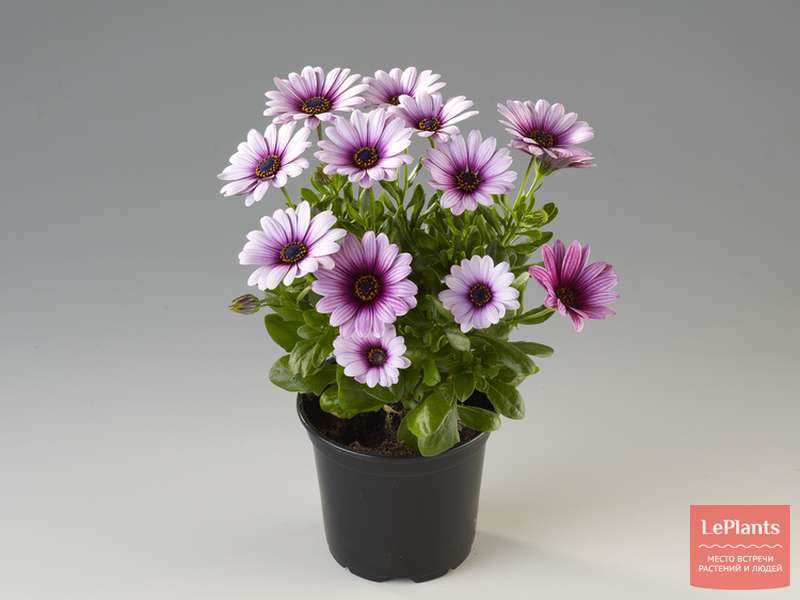
Остеоспермум — это растение с прекрасными перистыми листьями, которые придают ему уникальный вид. Листья остеоспермума имеют нежный зеленый оттенок и великолепно сочетаются с его цветами.
Остеоспермум — это растение, которое требует некоторого ухода, но его красота и элегантность стоят всех усилий. Для успешного выращивания остеоспермума необходимо обеспечить ему яркий солнечный свет и умеренное поливание.
Цветы остеоспермума яркие и разнообразные. Они могут быть белыми, розовыми, фиолетовыми или оранжевыми. Благодаря этому остеоспермум стал популярным растением для украшения садов и цветников.
Выращивание остеоспермума из семян — это увлекательный процесс, который позволяет получить много новых растений. Семена остеоспермума обычно посевают в феврале или марте, а первые цветы появляются через несколько месяцев.
Остеоспермум — одно из популярных растений в садоводстве благодаря своей неприхотливости и красоте. Существует множество видов остеоспермума, каждый из которых обладает своими особенностями и привлекательностью.
Остеоспермум с крупными цветками
Остеоспермум – это растение семейства сложноцветных, которое известно своими яркими цветами и неприхотливостью. Видовое разнообразие остеоспермума поражает своим разнообразием форм и размеров цветков. Особенно красивыми считаются виды с крупными цветками, которые могут достигать диаметра до 10 см.
Эти растения прекрасно смотрятся в саду и на клумбе, создавая яркие и насыщенные цветовые акценты. Самые популярные сорта с крупными цветками включают в себя различные оттенки розового, фиолетового, оранжевого и желтого цвета.
Для успешного выращивания остеоспермума с крупными цветками необходимо обеспечить ему светлое место и регулярное поливание. Почва должна быть хорошо дренированной и плодородной. Лучше всего семена рассаживать в грунт после окончания заморозков, чтобы обеспечить им оптимальные условия для роста и развития.
Остеоспермум с крупными цветками отлично подходит для садоводства, так как не требует особого ухода и способен долго радовать своими красивыми и уникальными цветами. Это растение станет настоящим украшением любого сада и привлечет внимание всех, кто пройдет мимо.
Популярные сорта остеоспермума
Остеоспермум — это прекрасное растение, которое пользуется большой популярностью среди садоводов. Благодаря своим ярким и красивым цветам, оно стало одним из самых популярных видов для выращивания в садоводстве. Но помимо обычного остеоспермума, существуют и другие сорта этого цветка.
Сорт «Пикоти»
Этот сорт остеоспермума отличается своими маленькими и нежными цветками. Они имеют яркую окраску и выглядят очень аккуратно. «Пикоти» прекрасно смотрится в букетах и украшении цветочных композиций.
Сорт «Сансет»
Остеоспермум «Сансет» имеет крупные цветы с яркими оранжевыми оттенками. Этот сорт привлекает внимание своей яркостью и красотой. «Сансет» отлично смотрится как в обычных клумбах, так и в вазонах или горшках.
Сорт «Серебряный радуга»
Этот сорт остеоспермума удивляет своими необычными цветами. Они имеют серебристо-розовую окраску, которая выглядит очень эффектно. «Серебряный радуга» становится настоящей украшением сада и привлекает внимание всех проходящих мимо.
Сорт «Фантастик»
Остеоспермум «Фантастик» характеризуется яркими и контрастными цветами. Лепестки этого сорта имеют фиолетово-розовую окраску с яркими желтыми полосками. «Фантастик» никого не оставит равнодушным и станет настоящим украшением сада или клумбы.
Уход за остеоспермумом
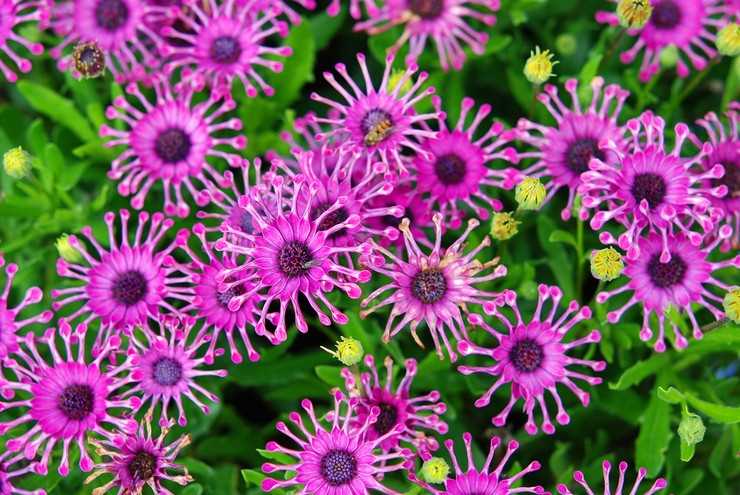
Остеоспермум – это прекрасное растение для садоводства. Оно привлекает внимание своими яркими и красивыми цветами, которые можно вырастить из семян. Для успешного выращивания остеоспермума необходимо обеспечить ему правильный уход.
Полив
Остеоспермумы нуждаются в регулярном поливе. Растение лучше всего растет на солнечных местах, поэтому в летний период полив должен быть обильным. Однако стоит помнить, что затопленная земля может негативно сказаться на растении. Поэтому рекомендуется следить, чтобы вода не задерживалась в горшке и быстро высыхала.
Подкормка
Чтобы остеоспермум радовал своими прекрасными цветами, необходимо регулярно подкармливать его. Для этого можно использовать универсальные удобрения для цветущих растений. Подкормку проводят каждые 2-3 недели в период активного роста растения.
Обрезка
Остеоспермумы нуждаются в обрезке, чтобы сохранить компактную форму и стимулировать цветение. Обрезку проводят после окончания цветения. Удаляются отцветшие цветы и сухие ветви. Это помогает растению сохранить свою красоту и здоровье.
Защита от вредителей
Остеоспермум может быть атакован различными вредителями, такими как тли или паутинный клещ. Чтобы предотвратить поражение растения, рекомендуется регулярно осматривать его и при обнаружении вредителей применять соответствующие меры защиты.
Виды и сорта

Остеоспермум представлен множеством видов и сортов. Некоторые из них имеют разные цвета и формы цветков. Самые популярные виды остеоспермума – остеоспермум многолетний и остеоспермум двухцветковый. Сорта этого растения отличаются по высоте, форме и цвету цветков, что позволяет выбрать наиболее подходящий для вашего сада.
Размножение остеоспермума

Остеоспермум – это растение, которое можно размножать несколькими способами: семенами и черенками.
Размножение семенами
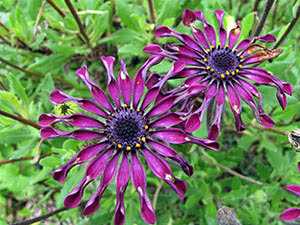
Самым популярным способом размножения остеоспермума является через семена. Чтобы получить семена, необходимо дождаться цветения растения. После того как цветы остеоспермума завянут, образуются семенные коробочки. Созревшие семена можно собрать и использовать для выращивания новых растений. Для этого семена нужно посеять в грунт или в горшки с плодородной почвой, удобренной комплексным удобрением. Для лучшего всхожести рекомендуется предварительно проращивать семена во влажной субстрате.
Размножение черенками

Еще одним способом размножения остеоспермума является через черенки. Для этого нужно отрезать стебель растения с несколькими узлами и уложить его во влажный песок или субстрат для приживания. Черенки рекомендуется укоренять в теплом помещении при температуре около 20-25 градусов. После корневой системы формирования черенки можно пересадить в отдельные горшки или в открытый грунт. Этот способ размножения позволяет сохранить сортовые особенности растения.
Размножение остеоспермума семенами и черенками позволяет садоводам разнообразить свою коллекцию этого красивого и неприхотливого цветка. Такое размножение является доступным и простым, поэтому может быть успешно применено в садоводстве.
Вопрос-ответ:
Какие виды и сорта остеоспермума можно вырастить из семян?
Из семян можно вырастить различные виды и сорта остеоспермума, такие как Остеоспермум фрутекс (Osteospermum fruticosum), Остеоспермум эйнигери (Osteospermum ecklonis), Остеоспермум акантофиллум (Osteospermum acanthifolium) и др.
Как правильно выращивать остеоспермум из семян?
Для выращивания остеоспермума из семян необходимо выбрать подходящую почву, смешанную с песком для обеспечения хорошей дренажной системы. Семена следует посадить на глубину около 1 см и обильно полить. Нужно помнить, что остеоспермум — растение светолюбивое, поэтому его следует размещать на солнечном месте.
Могу ли я выращивать остеоспермум в квартире?
Остеоспермум можно выращивать в квартире, но для этого необходимо обеспечить ему яркий свет. Растение требует много света, поэтому лучше размещать его возле окна, которое освещено солнечными лучами. Также стоит учесть, что остеоспермум требует достаточного количества свежего воздуха, поэтому регулярно проветривайте помещение.
Как часто нужно поливать остеоспермум?
Остеоспермум нуждается в регулярном поливе, особенно в период активного роста. Поливайте растение, когда верхний слой почвы высохнет на глубину около 2 см. При этом следует избегать застоя влаги, чтобы не вызвать гниение корней. Важно помнить, что остеоспермум предпочитает сухой период перед следующим поливом.
Как долго происходит выращивание остеоспермума из семян?
Выращивание остеоспермума из семян занимает от 2 до 4 месяцев в зависимости от условий выращивания и вида растения. В начале процесса семена прорастают в течение 7-14 дней, затем растение активно растет и формирует цветочные почки. Цветение остеоспермума обычно начинается через 2-3 месяца после посева.




